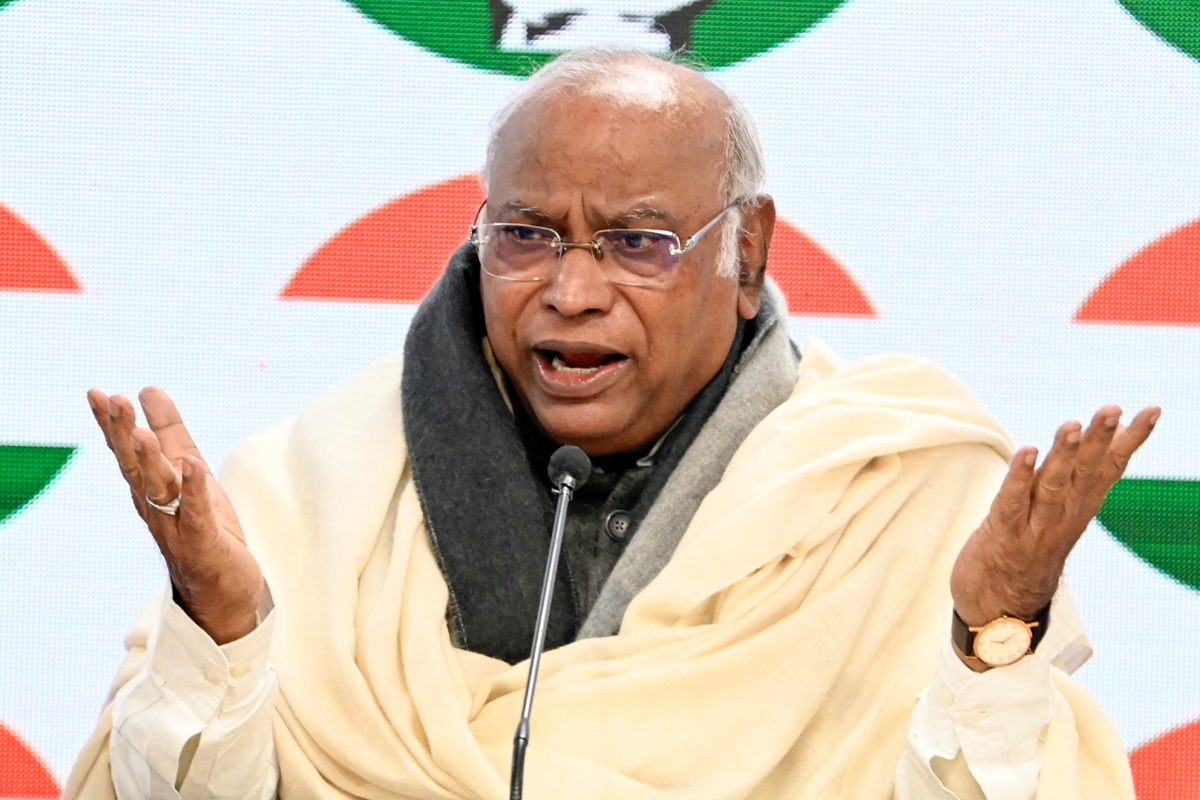Congress will give OBC quota to others on religious basis: PM
Narendra Modi said, "Congress intends to create a situation in UP like that of Karnataka."
In the labyrinth of Indian politics, the India Alliance finds itself at a critical juncture, entwined in the intricate threads of caste dynamics.

Mallikarjun Khadke (ANI Photo/Mohd Zakir)
In the labyrinth of Indian politics, the India Alliance finds itself at a critical juncture, entwined in the intricate threads of caste dynamics. This interplay between opportunity and challenge, often referred to as the caste conundrum, poses a profound question. Can the alliance harness the support of marginalised communities without triggering polarisation within the broader social fabric? Central to this unfolding narrative is the enigmatic figure of Congress president Mallikarjun Kharge. With some in the India alliance touting him as a potential Prime Ministerial candidate, the lingering query remains ~ will his Dalit background serve as a unifying force or potentially reignite historical caste-based animosities? Delving into the historical trajectory of Dalit leaders within the Congress party unveils a complex legacy. While figures like K.R. Narayanan added dignity to Dalit leadership, others grappled with the ephemeral nature of prominence.
The fleeting tenures of Dalit chief ministers in various states raise pertinent questions about the Congress party’s capacity to cultivate enduring leadership from marginalised communities. Beyond the political spectrum, the narrative reveals the societal tapestry of India, where democratic maturity is still grappling with the acceptance of leaders from socially marginalised backgrounds. The entrenched hierarchical relationships between agrarian castes and Dalits emerge, suggesting that elevating a Dalit leader may not only polarise political allegiances but also risk a seismic shift in power dynamics, exemplified by recent events in Punjab. Scrutinising the intricate societal tapestry of India, the narrative navigates through the democratic terrain still grappling with accepting leaders from socially marginalised backgrounds. The narrative then pivots to the astute political manoeuvring employed by different parties, with the BJP emerging as a strategic player in navigating caste divisions. Utilising caste associations and symbols for political mobilisation, especially in states like Uttar Pradesh, the BJP has positioned itself as a party representing the subalterns, adding another layer of complexity to the India Alliance’s path forward. In addressing the nuances of the caste conundrum, strategic recommendations surface, emphasising the need for the India Alliance to broaden its social support base.
The call to shift focus towards the Economically Backward Classes (EBCs) emerges as a calculated move to sway Other Backward Classes’ (OBC) support, potentially mitigating the risk of polarisation among agrarian castes. The narrative posits that securing victory in the upcoming elections hinges on the Congress regaining its foothold among OBCs, with a marginal 5 per cent shift deemed a potential game-changer. In essence, the India Alliance stands at a pivotal juncture, facing the multifaceted challenge encapsulated in the term ‘Caste Conundrum.’ Navigating historical struggles, addressing entrenched hierarchies, and strategically broadening its support base represent the alliance’s arduous journey towards fostering a more inclusive and harmonious political landscape in India.
Advertisement
Advertisement